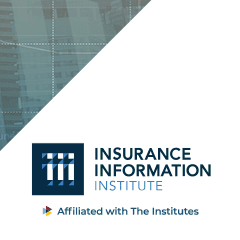 In this article, we discuss how personal insurance policies address communicable diseases and epidemics. In a later article, we’ll look at how commercial insurance policies address these issues.
In this article, we discuss how personal insurance policies address communicable diseases and epidemics. In a later article, we’ll look at how commercial insurance policies address these issues.
Measles are back with a vengeance. It’s gotten so bad in one New York county that the local government tried to ban unvaccinated children from public spaces.
Little known fact to people outside the insurance world: many personal insurance policies address communicable diseases and epidemics. Let’s walk through some of them.
Homeowners liability insurance: probably not covered
If you crack open your handy HO-3 standard homeowners policy and flip to Section II – Liability Coverages, you’ll notice that the transmission of a communicable diseases that causes any bodily injury or property damage is not covered by the policy. What this basically means is that if you (the insured) cause someone to get hurt (i.e. sick) via a communicable disease, whether you knew you were sick or not, then the policy won’t cover you for any liability if you get sued.
So if someone without a measles vaccination throws a party and ends up getting several guests sick, that person’s homeowners policy probably won’t cover any liability arising out of their actions. Doubly so if the person did this purposely: intentional acts are excluded from pretty much every insurance policy on earth.
Personal liability umbrella: probably not covered, but it depends
A personal liability umbrella policy is basically an extra layer of liability insurance. It will cover some types of liability your homeowners insurance excludes – and will also cover higher payments, sometimes up to $1 million (homeowners is often limited to $300,000).
Personal umbrella policies will also often exclude liability arising out of the transmission of a communicable disease. But not always, since what constitutes a communicable disease often depends on the specific policy. Some policies only exclude sexually transmitted diseases; others will exclude any communicable disease.
Travel insurance: could be covered, depending on the situation
Travel insurance policies can vary dramatically, depending on the insured’s needs. Two of the more common coverages are for trip cancellation and emergency medical treatment.
Will travel insurance cover you if a trip gets cancelled due to an epidemic or pandemic? Again, depends on the policy, but probably not. Many travel policies will exclude losses caused by disease outbreaks.
What if you get sick and need to cancel your trip? Unfortunately, you’re probably not covered if you got sick because of an epidemic. But for other diseases, you could be covered, depending on the insurer and a whole laundry list of conditions. For example, a sickness that would be covered often requires that the sick person be so ill that they can’t travel (a mild cough won’t pay out); the sick person is also often required to have a medical professional confirm that they were, in fact, too sick to travel.
If you have emergency medical treatment coverage, then you’ll be covered for any covered medical care, including illness. However, these kinds of policies can get very complicated; it’s important to talk to your agent to make sure you are getting the coverage that you need.








